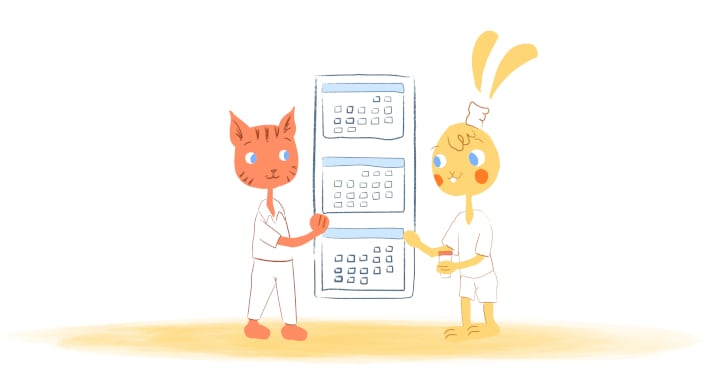

The concept of “Zoom fatigue” has been widely discussed, both because it exists — as shown by several recent studies — and because Zoom may be one of those concepts that we have to keep an eye on for the safety of our employees. Some have even suggested that Zoom provides an excellent reason to step away from the camera as a “well-being practice.”
It certainly seems like a done deal — the epidemic is still ongoing. For many companies, there have been policies enacted where no one will return to the office and everyone will stay working remotely. For some, there will never be a return to “normal,” and that seems the case in the political landscape.
Whatever the case may be — our new work-life balance has arrived. Nonetheless, as we continue in our third year of the pandemic that we can now ignore a little easier — many are still working remotely. It’s now time to reevaluate our video-conference work. You have likely found that remote work is challenging.
We have proven that seeing each other — even on camera — is vital for human connection and sustained attention, but finding a solution to the tiredness problem is a more sustainable choice than turning off the cameras entirely — and more efficient.
Here are three effective strategies for overcoming the difficulties of Zoom fatigue.
Stop gazing at yourself in the eyes.
Can you imagine if your work forced you to spend the majority of your time staring at yourself in the mirror? It would be dreadful. Despite this, according to recent research conducted by Stanford University, the primary cause of the condition of Zoom fatigue is the endless staring contest with yourself.
Do yourself a favor and right-click and choose “Hide self-view” after you have arrived at each meeting and are comfortable. Some people prefer to arrive a bit early if possible and check out their set-up and experiment with the Zoom video filters (cinnamon is beautiful to many people).
But consider the tactic of switching off your self-consciousness by turning your face away from the camera — you’ll find it beneficial. You’ve already tried playing video games on your phone while on your Zoom meetings or reading a book from your propped-up iPad. Yes, most have texted and caught up on social during Zoom meetings — and yes, most have been called out for these “infractions.” Nonetheless — you’ll feel better if you don’t have a staring contest with yourself.
Take frequent pauses — A pause helps stop Zoom Fatigue.
The shift to remote work has resulted in a dramatic increase in the number of meetings held. Because there is no longer the convenience of a hallway conversation, there is a notion that you must arrange everything. And what about the preset duration? One hour or thirty minutes, notwithstanding the absence of any reasoning other than the conditioning of 12 years of schooling. You may include recuperation and transition periods into your workweek by prohibiting back-to-back meetings or interspersing in-person meetings with the Zoom fare.
A straightforward approach is to set meeting lengths of 45 minutes and 25 minutes as your regular meeting times. Email systems now make it simple to change the default Zoom calendar settings for your account. These micro-breaks provide you with valuable time away from the screen to stretch, pet the dog or push the reset button.
Raise the bar on what is acceptable for Zoom fatigue.
Encourage each employee to create a camera-ready workspace in their home so they are always set. Go over Zoom readiness with your whole company. From the dining room table to a bedroom desk and even a separate office, we’ve made an effort to make everything Zoom-friendly.
Let employees know (or let your team members know) that there are still issues causing Zoom fatigue that may be showing up as Zoom Anxiety. Last week we all sat in a meeting and stared at a screen that forced others to stare at someone who seems to be in witness protection (completely back-lit with unidentifiable features).
Have you seen someone who is wearing a distracting halo? It happens if your colleagues don’t put in the effort necessary (from an overhanging light fixture). However, by elevating the standards for virtual environments, you can make video conferencing have-tos more comfortable for everyone.
If you’re the boss, provide a low-cost ring light to everyone on the team. Certainly, instruct employees on how to seem more camera-ready in general. And help everyone by making time management a must.
It seems that no matter where your place of employment is — whether hybrid, office or all remote work — a significant portion of your work will now be video-conferencing. Please take a few basic measures to make it more pleasant for yourself and others by following these few simple guidelines.
The last video-conferencing step
This is what separates the gurus from the acolytes and where the rubber hits the road. How the real-world functions now includes Zoom or other conferencing platforms. You may as well make the best of it — and up your Zoom game. Are you up for it? Can your mindset accept new parameters — or are you stuck in the mud of your own making?
The post-pandemic world is not kind to the stuck-in-the-mud-ers. Embrace the Zoom reality and you’ll be a lot happier with the embracing of what is — and acceptance seems to banish the Zoom fatigue. You don’t want to be “the one” that fails to find that top rung to the ladder.
Image Credit: Pavel Danilyuk; Pexels; Thank you!











Abby Miller
Student at UC Berkeley, currently working on a degree in Electrical Engineering/Computer Sciences and Business Administration. Experienced in CSX, productivity management, and chatbot implementation.